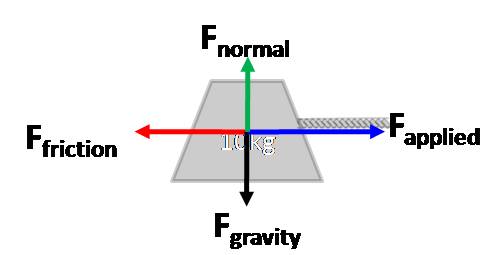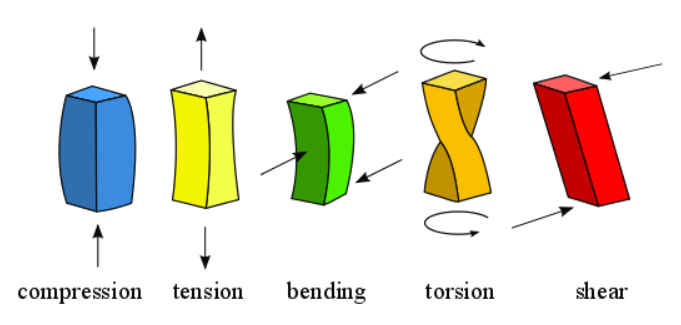Wikipedia: A force (usually denoted by ) is an influence that changes an object’s velocity.
Definition
In simple terms, a force is a push or pull that is applied to an object. Forces are represented via vectors, i.e. they have both direction and magnitude intensity of the force.
Forces can be differentiated based on how they affect the object:
- Contact forces: Friction, Applied, etc.
- Non-contact forces: Gravitational, Magnetic, etc.
**Forces are measured in Newtons, , where
Calculating Force
Second Law: Law of Acceleration
”A body’s acceleration is proportional to the force being applied on it divided by it’s mass”
In other words:
Link to source
- = Force (in Newtons, N)
- = Mass (in kilograms, kg)
- = Acceleration (in )
Net Force
Net force represents the sum of all the vector forces acting on an object. Usually denoted as or (the symbol refers to ‘sum of’). Usually calculated by separating the horizontal and vertical components of every force and then adding/subtracting them.
According to Newton’s First Law, an object only changes it’s velocity when an unbalanced force acts on it. In terms of net force, if , then the object’s velocity remains unchanged i.e. it has achieved equilibrium
Free Body Diagrams
A useful way to conceptualise the different forces acting on an object. It usually involves separating a force into it’s horizontal and vertical components.

Types of Forces
There are five main types of forces:
- Compression: compress or squash. Can be applied on springs
- Tension: stretch or elongate. Mostly applied on steel rods, ropes and strings.
- Bending: tension and compression applied to different parts of an object at the same time
- Torsion: Twisting force
- Shear: cut or slice
